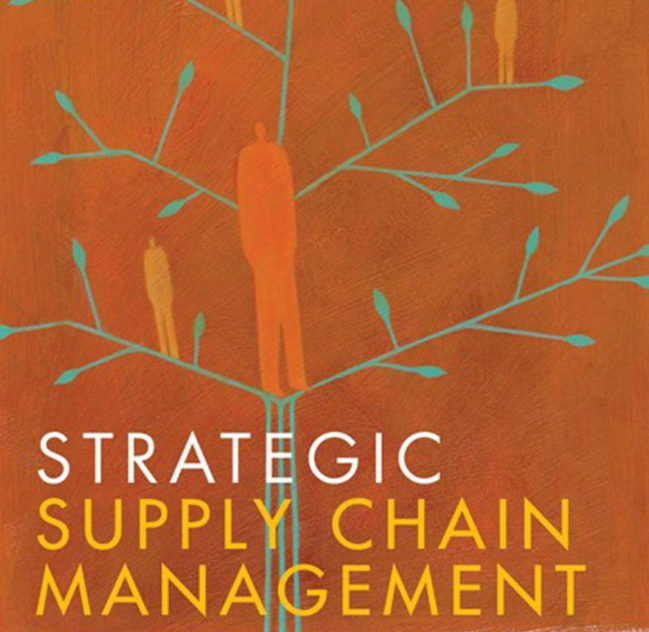
Why it’s vital to gear up for the ‘globotics’ revolution
The forces of globalization and robotics – ‘globotics’ – are opening a new pathway to prosperity for developing nations. Richard Baldwin shares his vision of how this could look....

Published 1 February 2022 in Leadership • 6 min read
In January, we began with The Future of Global Retail by Winter Nie, Professor of Leadership and Change Management, Mark J.Greeven, Professor of Innovation and Strategy, Yunfei Fang and James Wang (2021, 250 pages).
China’s new retail revolution will completely transform how the world thinks about retail and digital innovation. But is the world ready yet? In this book, the authors share an insider’s perspective on what is happening in China to reveal the future for global retail, and a clear framework to help you prepare.
The book presents a number of real-world cases, based on interviews and first-hand consumer experience, to decode China’s retail revolution so that you can understand what is happening and why, and what it means for the rest of the world. Crucially, the book identifies five critical stages in the development of new retail that global retail executives need to grasp now: lifestyle commerce; online-merge-offline retail; social retail; livestream retail; and invisible retail.
To help the industry get ready for this new, China-inspired paradigm in retail, the authors present a practical and simple framework – a 10-year strategic roadmap for global retail executives, which we call the “Beyond” the Value Chain Model.
China’s new retail is not just about fashion, cosmetics, snacks, data-driven convenience stores, and commercial live streaming. At a time when the world of retail is being upended, it offers inspirational lessons in innovation, purpose, and agility for global executives across the entire retail spectrum.
This book is about much more than retail – it offers a detailed look at how Chinese companies have combined e-commerce, social media, and innovative payment systems to revolutionize the way business is done. For managers of all industries, this entertaining and highly readable account provides a glimpse of the future of business. Insightful and compelling, with many fascinating examples.
Phil Rosenzweig, Professor of Strategy and International Management

In February, we will discuss The Business Model Navigator by Oliver Gassmann, Karolin Frankenberger and Michaela Choudry (2020, 424 pages).
A strong business model is the bedrock to business success. But all too often we fail to adapt, clinging to outdated business models that are no longer promising the results we need.
This new edition builds on the well-known methodology of the first edition to allow you to innovate, test, and implement new business models within your industry.
Discover the idea of business model innovation, from structuring the process of innovation of a company’s business model to encouraging outside-the-box thinking. With expert authors, The Business Model Navigator combines learning research with evidence of high practical impact, allowing you to master the transformation journey and lead your business to success.
This book represents a herculean effort to condense the authors’ vast knowledge of the subject into 424 pages. The book is broken down into three distinct parts: the first constitutes the intellectual meat of the book, dealing with the challenges of business model innovation. I flew through this part in one go!
The second section offers a helicopter view of some 55+ different business models, including some you might be aware of (freemium), but also a lot of “pearls” you have probably never heard of. Did you know there is an aikido business model? For each different business model typology, the authors offer a brief description, some examples, and some insights on how it could be applied. It is my guess that this part was not written to be read in one go, page after page. Instead, be selective: read what you are interested in and shamelessly skip the rest (books, after all, are always there for you to return to when needed).
The final section of the book is all about implementation. This part is less developed, but I still believe the two and a half pages in the “10 recommendations to innovate your business model” section are worth reading – they represent a good framework to keep in mind when your organization is going through a business model transformation. All in all, a book that you should own, as it is one you will read, underline, set aside, and come back to again and again. Enjoy the reading!
Salvatore Cantale, Professor of Finance at IMD

For March, we shall discuss Strategic Supply Chain Management by Carlos Cordon, Professor of Strategy and Supply Chain Management, Kim Sundtoft Hald and Ralf W. Seifert, Professor of Operations Management (2012, 288 pages).
The supply chain is at the heart of every successful business organization’s decision-making process. This textbook explains how to create a winning supply chain management strategy by spotlighting how senior executives in European and US companies have turned their supply chains into strategic weapons designed to convert threats, risks, and outside pressures into competitive advantages.
Strategic Supply Chain Management contains 20 real-world cases, all of which have been field-researched by a top author team and tested out in the classroom. Each case adopts an executive leadership perspective to illuminate the real dilemmas faced by managers. The authors draw on their extensive classroom and industry experience to ensure that the writing style is geared towards an executive education readership.
This elite case package will provide a complete teaching resource and authentic learning experience for MBA and executive education classes in supply chain management throughout the world.
The COVID-19 pandemic has shown that a company’s success can ride on how it manages a supply chain. Hardly a day goes by without another report of bottlenecks and shortages, shutting down production and pushing up prices. This book is a must-read for every executive who wants to arm themselves against the supply chain shocks, providing real-world lessons that will help guide them through the uncertainty.
Carlos Cordon, Professor of Strategy and Supply Chain Management

April’s discussion will focus on The Right Place: How National Competitiveness Makes or Breaks Companies by Arturo Bris, Professor of Finance at IMD (2021, 492 pages).
The Right Place explains why firms succeed in one country and fail in another, irrespective of their inner drivers, and suggests potential initiatives that governments can take to help the private sector create jobs and, consequently, make their countries more prosperous.
The competitiveness race is not unlike a cycling race. If you want to ride fast, you need three things: a good bike, to be in good shape, and a smooth and fast road. In a collaborative model, you might say the business is the bicycle, the business leader is the cyclist, and the road is the government and the external environment. The responsibility of a government is to design and build the best possible road. It turns out that when the road is good, good cyclists suddenly appear and want to race on it. In this book, competition and macroeconomics expert, Arturo Bris, provides the analysis of country competitive performance based on 30 years’ advising countries on this topic. The typical mistakes that countries make are revealed and the pillars necessary for building a competitive economy: economic performance as a necessary condition for prosperity; government efficiency, so the public sector can create the conditions for a productive economy; business efficiency, so companies can create jobs; and infrastructure, both tangible and intangible, so businesses and individuals can operate efficiently.
With contemporary case studies throughout, the book provides an illuminating read for politicians, business leaders, and students of macroeconomics.
In this seminal book, Arturo Bris shows us why the competitiveness of nations around the globe matters for business. A warm recommendation to anyone interested in decision-making beyond the state and survival strategies of companies.
Alexander Stubb, Professor and Director at the European University Institute, Former Prime Minister of Finland


24 October 2023 • by Richard Baldwin in Competitiveness
The forces of globalization and robotics – ‘globotics’ – are opening a new pathway to prosperity for developing nations. Richard Baldwin shares his vision of how this could look....

20 October 2023 • by David Bach in Competitiveness
Amid a complex situation rife with uncertainties, businesses should be prioritizing political risk alongside economic opportunities....

6 October 2023 • by Howard H. Yu in Competitiveness
Unpredictability in the marketplace can quickly burst the bubble of any company not agile enough to adapt to change.Here are lessons from the soda pop giant’s successful mission to update and diversify...

20 September 2023 • by Arturo Bris, Misiek Piskorski in Competitiveness
South Korea’s global champions and its broader economic landscape offer invaluable lessons for leaders worldwide. ...
Explore first person business intelligence from top minds curated for a global executive audience